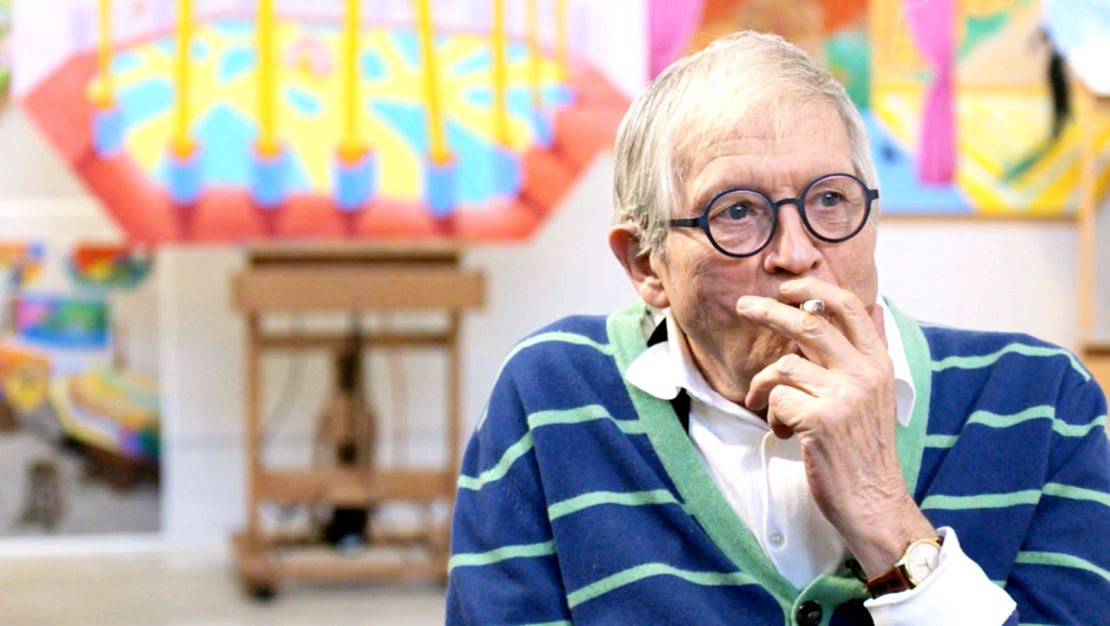David Hockney Net Worth: Art Market Icon, Digital Innovator & Pop Art Pioneer

David Hockney, one of the most celebrated British artists of all time, has carved a unique path through the art world for more than six decades. Known for his vivid palette, diverse techniques, and constant reinvention, Hockney’s work has spanned pop art, portraiture, photography, and even iPad drawings. As of 2025, his estimated net worth stands at $200 million — a reflection of both his commercial success and enduring cultural influence.
From his roots in post-war Yorkshire to the sun-drenched studios of California, Hockney’s artistic journey mirrors the evolution of modern art itself. His impact is not only felt in museums and galleries, but also in how digital technology has been embraced in fine art creation.
From Bradford to the Royal College of Art
David Hockney was born on July 9, 1937, in Bradford, West Yorkshire. Raised in a working-class household during the austerity of World War II, Hockney’s artistic curiosity emerged early. He attended Bradford Grammar School before studying at the Bradford School of Art between 1953 and 1957. There, he developed a foundation in traditional drawing and painting that would later serve as a base for radical experimentation.
Hockney continued his formal education at the Royal College of Art in London, where he enrolled in 1959. Although he clashed with academic expectations — famously refusing to submit a written essay and insisting his art should speak for itself — his extraordinary talent led the school to revise its graduation policies to accommodate him. That early defiance set the tone for a lifetime of artistic independence.
California and the Making of a Visual Icon
In 1964, Hockney made his first visit to Los Angeles, a city that would become central to his aesthetic and personal life. Captivated by the clear skies, modernist homes, and swimming pools, he relocated there permanently in 1978. The California years gave rise to some of his most iconic paintings, including A Bigger Splash (1967) and Portrait of an Artist (Pool with Two Figures) (1972).
These works, characterized by geometric simplicity and shimmering water effects, captured the light and leisure of Southern California with precision and emotional subtlety. They also established Hockney as a leading voice in contemporary art, helping define the West Coast’s visual identity while building his brand as a collector favorite.
Portraiture, Identity, and Personal Expression
Portraiture has always been central to Hockney’s oeuvre. His double portraits from the 1970s, such as Mr and Mrs Clark and Percy (1970–71), offered intimate psychological studies of friends and family members. Openly gay at a time when homosexuality was still criminalized in Britain, Hockney often used his work to explore relationships, desire, and domestic life.
Rather than striving for photorealism, Hockney emphasized emotional connection and spatial experimentation. His portraits offer insight not only into his subjects but also into the artist himself — a visual diary of relationships, personal evolution, and artistic process.
Technology and Innovation: From Polaroids to iPads
Hockney has consistently pushed the boundaries of artistic media. In the 1980s, he created “joiners,” a series of photocollages composed of Polaroid photographs arranged in grid-like patterns. These works disrupted traditional linear perspective and emphasized the fluidity of time and memory.
In the digital age, Hockney became one of the first major artists to fully embrace mobile technology. Starting with iPhone drawings and later transitioning to iPads, he created thousands of digital artworks using his fingers and styluses, often publishing them daily. Far from a novelty, these pieces reflect a deep understanding of composition, color, and immediacy — proving that creativity transcends tools.
His 2018 “A Bigger Picture” exhibition at the Royal Academy featured immersive landscapes, many created digitally or on massive multi-panel canvases, demonstrating his continued relevance and adaptability even in his eighties.
The Commercial Power of Hockney’s Art
Hockney’s artistic merit is matched by his commercial success. In November 2018, his 1972 work Portrait of an Artist (Pool with Two Figures) sold at Christie’s for $90.3 million, setting a world record at the time for a living artist. The painting’s blend of California sunshine and emotional depth made it a standout piece in contemporary art history.
Other high-value sales include:
- The Splash (1966) – $29.8 million (2020, Sotheby’s London)
- Pacific Coast Highway and Santa Monica (1990) – $28.5 million (2018)
- Henry Geldzahler and Christopher Scott (1969) – $49.5 million (2019)
These prices reflect both the growing art market and Hockney’s lasting appeal as a collector’s favorite. His works are housed in major institutions and private collections around the world, including the Tate Britain, MoMA, and the Getty Museum.
Life in the 2020s: Normandy and Legacy
Now in his late 80s, Hockney continues to work and innovate. Splitting his time between Yorkshire and Normandy, France, he has returned to large-scale landscapes and immersive installations. Despite global recognition, he retains a certain rebelliousness, often criticizing art world trends and emphasizing the importance of “looking” and observation in an increasingly distracted age.
As of 2025, Hockney remains a cultural force — not just a painter, but a storyteller, a provocateur, and an enduring icon of modern British art. His net worth of $200 million is a testament to both his commercial savvy and his lasting contribution to contemporary visual culture.
Conclusion
David Hockney’s artistic legacy is unparalleled in its scope, diversity, and influence. From the rooftops of Bradford to the swimming pools of Los Angeles and the apple orchards of Normandy, Hockney has redefined what it means to see the world through art. His $200 million fortune in 2025 reflects not just the monetary value of his work, but a lifelong commitment to curiosity, reinvention, and the simple act of observation.





